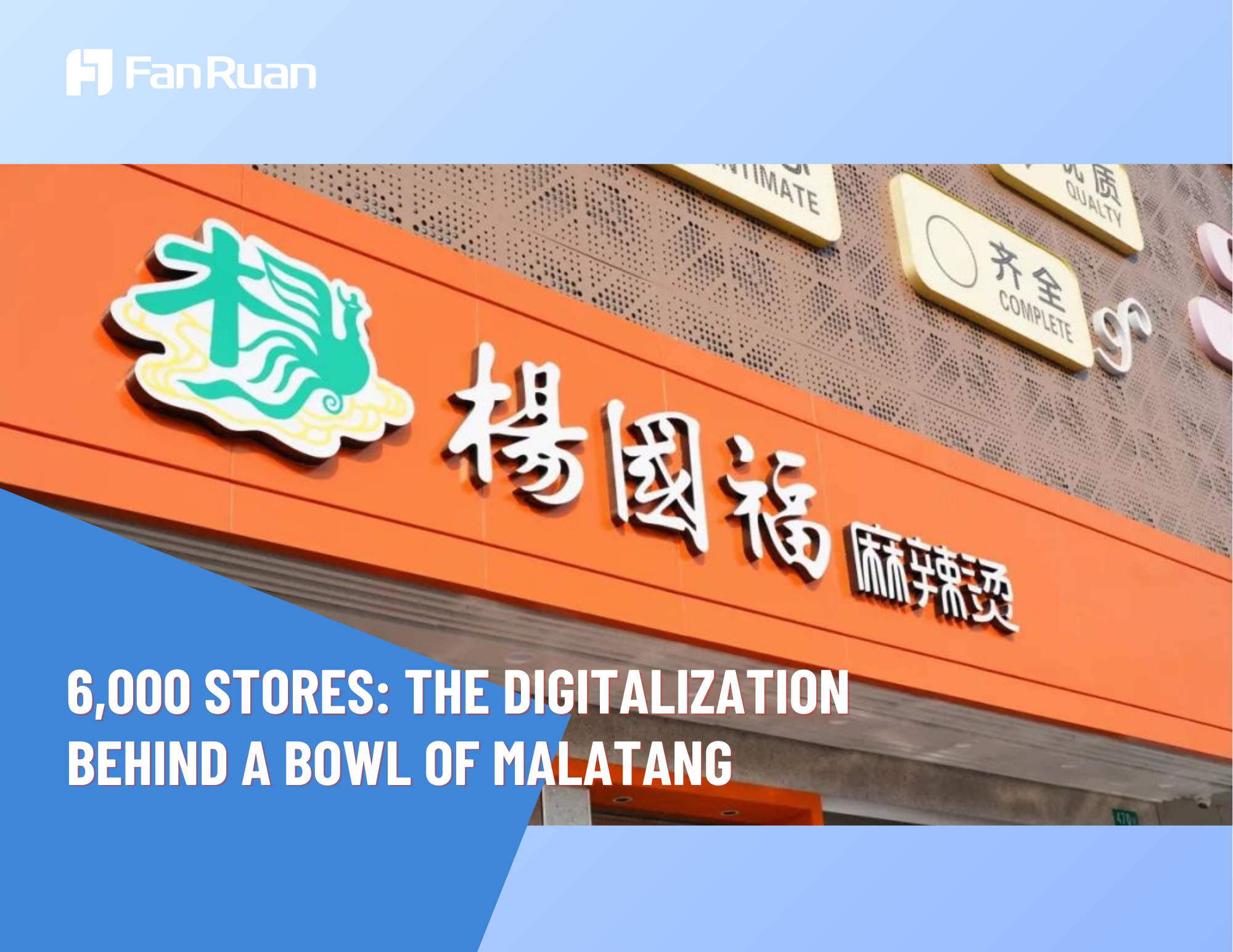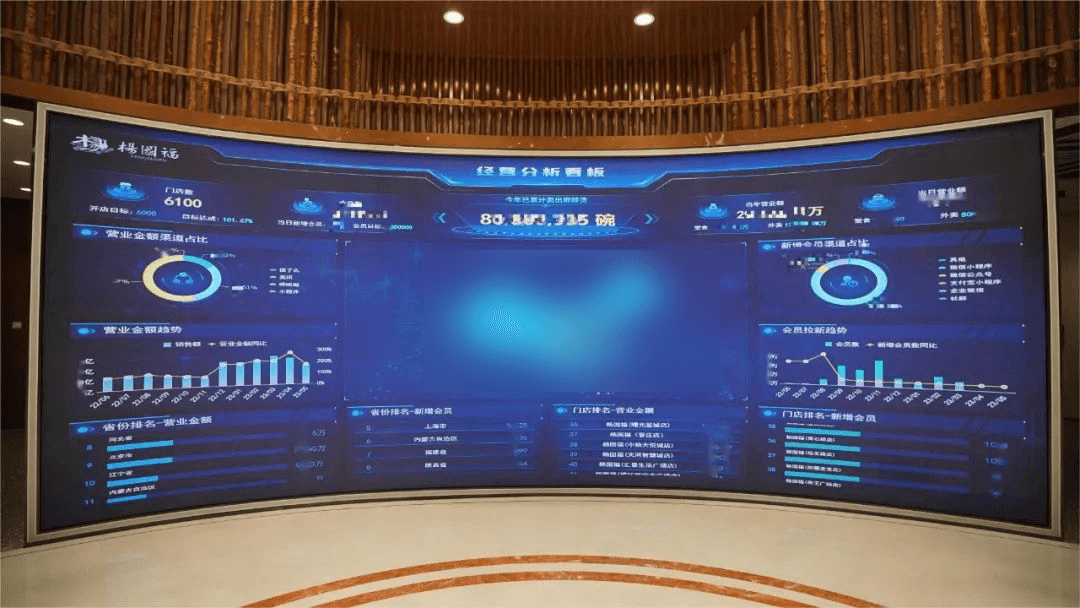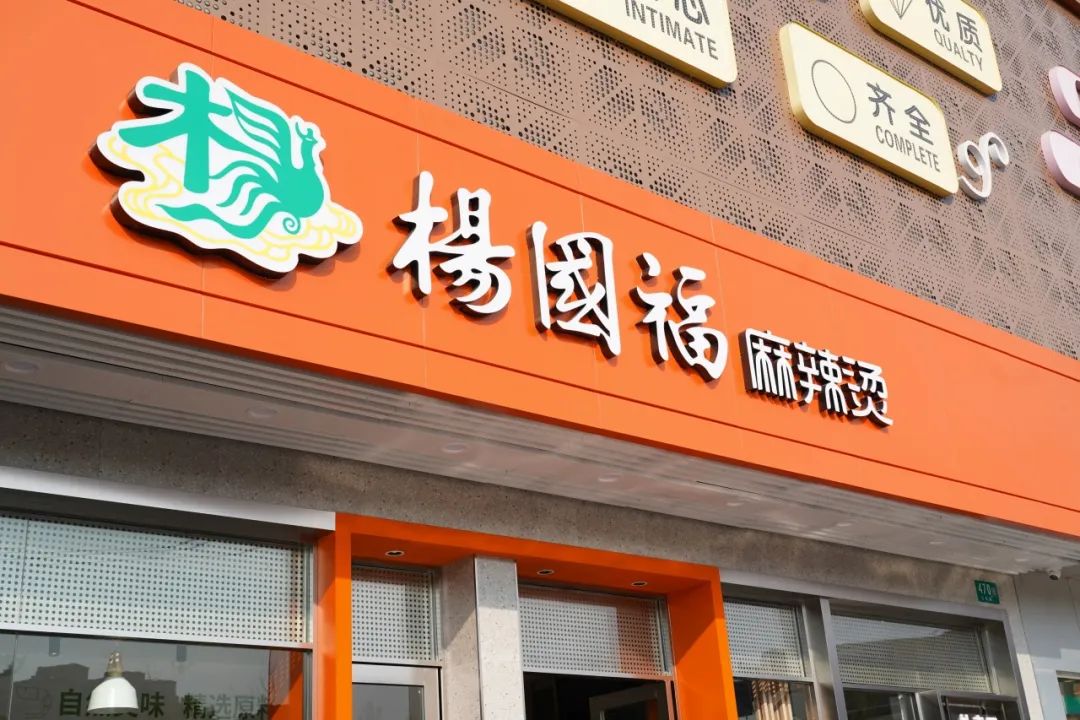Back to customer center
YangGuoFu Malatang – 6,000 Stores: The Digitalization Behind a Bowl of Malatang

Data Changes Strategies
One-click across 47 Systems
6,000 Stores
With every takeaway order, we know exactly how much the factory earns, how much the vendors earn, and how much the company earns — that’s the reason for digital transformation.
Wang Linlin
Head of Digital Transformation | YangGuoFu
“Is it really meaningful for a malatang business to go digital?” — This was the doubt raised three years ago before Wang Linlin, Head of Digital Transformation at YangGuoFu, took the stage to speak. Today, that question has a clear and definitive answer.
A Dashboard Born from Demands
Walking into YangGuoFu‘s headquarters in Shanghai, there is a full-wall 3D dashboard. This real-time visualization —developed by FanRuan -- shows comprehensive data on their malatang business, including sales revenue, order volume, and the number of bowls sold.

Wang Linlin, Head of Digital Transformation at YangGuoFu, shared: “Eight years ago when YangGuoFu first began its digital transformation, CEO Yang was already highly supportive of this direction.” Even today, among the thousands of consumer brands served by FanRuan, it’s rare to see performance metrics measured in “bowls”.
YangGuoFu began its transformation as early as 2015. The initial systems were limited in functionality, inconsistent in standards, and lacked unified data definitions. They couldn’t support the scale of required feedback and often crashed. Wang noted reflecting on those early challenges: “The most painful part of data analysis is no high-quality data. Everyone wants data, but Excel can only store just over a million rows per sheet, and the analysis is heavily constrained by computer performance—it would constantly freeze.”
Once transformation demands were internally aligned, Wang researched available tools. He ultimately chose FineBI after three months of evaluation.
For YangGuoFu, digital transformation was an unfamiliar endeavor.
Wang explained: “Especially in the malatang industry—even though we only have four main soup base SKUs (malatang, mala dry mix, tomato, and sour-spicy)—there are over 200 individual ingredients. The combinations of these soups and ingredients result in a highly complex data structure. Unlike other BI vendors, FanRuan also brings consulting capabilities. During early discussions, FanRuan helped incorporate business needs directly into report forms, streamlined repetitive requirements, and set up proper access permissions. That’s one of their key advantages.”
Wang personally began drafting the digital system plan—sketching ideas on a glass at home. “If something didn’t work, I’d wipe it off and start again. I refined every detail. When work resumed, I immediately collaborated with our developers to iterate and optimize. That’s how the current system architecture came to be.” During that same period, YangGuoFu opened nearly 1,000 new stores annually, rapidly capturing regional markets. As Wang emphasized: “The core of restaurant brand operations is supply chain management. Once the supply chain is streamlined, store expansion becomes fast and efficient.”

How to Support Decisions with Data—Not Just Gut Feelings
"Where does the pressure for digital transformation come from? It comes from inside."
As someone working in the internal IT department, Wang observed that business departments often lack a clear vision of data modeling, and they may resist change. “But when you show them a report or a chart,” Wang said, “they immediately understand what it’s for and how it’s valuable to them. Some even proactively come to us with new requests.” With FanRuan acting as a “bridge,” the company has been able to clarify business needs and efficiently advance its digital initiatives.
What did FineBI Bring to YangGuoFu?
Wang shared a compelling example centered around spicy soup. Historically, YangGuoFu's offering was a classic broth-based malatang, but that decision wasn’t backed by any data—it was based on tradition and assumptions, without insight into customer preferences. Originating in Northeast China, YangGuoFu remained loyal to its traditional flavor. However, after analyzing POS data from Meituan and Ele.me, the team discovered significant regional differences in taste preferences. For instance, north of Shandong, customers preferred stronger, spicier flavors. But in southern regions, tomato-based broths and milder versions of the classic bone broth—often with a creamier, less spicy taste—were far more popular.
Using this data, YangGuoFu adapted its menu for southern markets, offering more balanced flavors and promoting tomato soup in key regions. The results were immediate and visible: both revenue and membership numbers saw rapid, measurable growth.

Indeed, traditional enterprises tend to focus their digital transformation efforts on internal operations. Through systems such as OA, ERP, and MES, internal digitalization is gradually achieved, often following a relatively fixed model. However, for emerging food and beverage brands like YangGuoFu, transformation must be consumer-centric. It needs to adapt to dynamic and evolving market demands, where falling behind could mean being quickly eliminated by the broader industry landscape.
The introduction of FineBI has helped YangGuoFu overcome data silos, seamlessly connecting previously fragmented systems into one unified data platform. This centralized display of information lays the foundation for data-driven decision-making. Looking ahead, as the company continues to grow, store management and member management will become increasingly critical. As Wang Linlin noted: “We are working on master data management—you can think of it as an upgraded version of a data middle platform.” Now, decisions made through FineBI can be aligned across 47 systems with one click, dramatically increasing operational efficiency.
"Is It Meaningful for a Malatang Brand to Go Digital?"
Returning to the question raised at the very beginning, Wang admitted: “To be honest, I was hesitant at first. It was a bold move and one that carries a high failure rate within the industry.”
But with a shift in mindset, it became clear: for a business like YangGuoFu with over 6,000 stores, even a two-day delay in operations for just one franchisee could result in substantial losses. More importantly, such delays add immense pressure on the franchisee, whether in reopening, restocking, or day-to-day operations.
Wang added: “You can’t evaluate digital transformation based solely on investment. You have to look at the return on investment (ROI).” Currently, YangGuoFu’s ROI on digital initiatives is highly impressive, with visible improvements in both efficiency and business performance. “With every takeaway order, we know exactly how much the factory earns, how much the franchisee earns, and how much the company earns. That’s the true meaning of our transformation.” Today, YangGuoFu has successfully integrated data from 47 systems and now operates primarily with just two core systems: FineBI and a main database—ensuring no information gaps. The company plans to further consolidate its systems to enable unified control. The next focus is to leverage the data in the CRM system.


